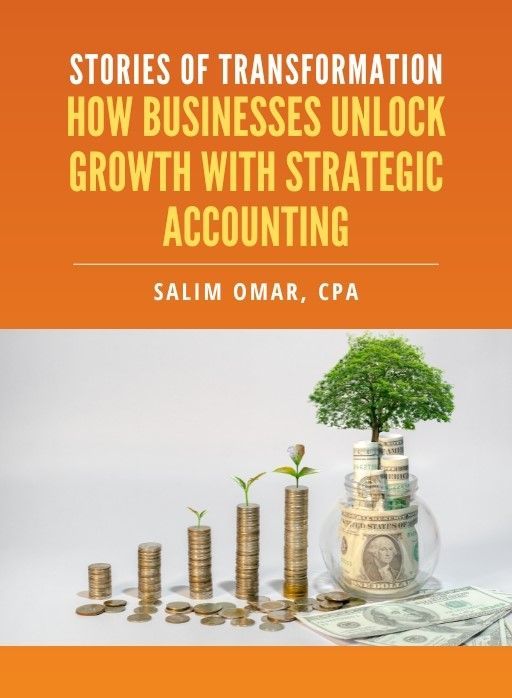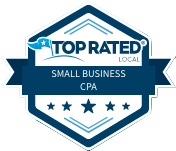SALT Deduction Strategies for High-Income Business Owners

Tax time can feel like walking a financial tightrope—especially for high earners in states with steep tax rates. One major balance issue? The SALT deduction cap. If you're a business owner bringing in serious income and living in places like California, New York, or New Jersey, that $10,000 cap on state and local tax deductions might feel like a punch to the gut.
So what can be done? Can you still save money? Absolutely. Straight Talk CPAs works with high-income clients every year to make sure they aren’t leaving money on the table. It all comes down to knowing your options—and planning ahead.
Let’s break down the SALT deduction situation and walk through practical strategies that can help you legally lower your tax burden, even with the cap in place.
What Is the SALT Deduction Cap?
The SALT deduction lets taxpayers deduct certain state and local taxes on their federal returns. That includes:
- State and local income taxes
- Property taxes
- Sales taxes (if elected instead of income tax)
Sounds great, right? It was—until the Tax Cuts and Jobs Act (TCJA) of 2017 slammed a $10,000 cap on it.
Before the cap, someone in a high-tax state who paid $35,000 in combined income and property taxes could deduct that entire amount from federal taxable income. Now, they can only deduct $10,000. For married couples filing separately, it’s even worse: just $5,000.
This hit high-income earners the hardest, especially those in high-cost-of-living states where property and income taxes are sky-high. That’s where strategic planning becomes critical.
Who’s Hit the Hardest?
If you're earning multiple six figures or more and live in a high-tax state, you’re probably feeling the full weight of this cap. Here are some examples:
- A business owner in San Francisco paying $25,000 in state income tax and $20,000 in property tax—gets stuck deducting just $10,000.
- An entrepreneur in New York City juggling high local and state taxes finds most of it nondeductible on their federal return.
- A real estate investor with multiple properties in New Jersey pays five figures in property taxes—but hits the ceiling quickly.
And if your income is on the rise, these numbers aren’t getting any smaller. That’s why SALT planning isn’t just a once-a-year checklist—it’s a core part of your year-round tax strategy.
Strategy #1: Entity-Level Tax Workarounds (Pass-Through Entity Tax)
Here’s some good news: many states have introduced a workaround for business owners through something called the Pass-Through Entity Tax (PTET). It allows certain businesses—like LLCs, S-corps, and partnerships—to pay state income tax at the entity level, bypassing the individual SALT cap.
How It Works:
Let’s say your LLC earns $800,000 in taxable income. Instead of you paying state income tax personally, your business pays it. That payment reduces your business income—so your federal taxable income drops.
This essentially converts your non-deductible personal SALT expense into a fully deductible business expense.
As of now, over 30 states have adopted some form of this workaround, including California, Illinois, and New York. But implementation varies, and elections are time-sensitive. It’s not automatic—your CPA has to elect it and follow specific steps, often annually.
Strategy #2: Shift Income or Deductions Between Years
If your SALT deduction is capped no matter what, you might consider timing strategies. For example:
- Prepay property taxes in one year if you haven’t hit the cap yet.
- Delay or accelerate bonus income, business draws, or capital gains depending on your total deduction situation.
Tax brackets, deductions, and credits change year over year. Sometimes shifting income by even a few weeks can save thousands—especially if it helps you make better use of other deductions or credits.
This is where having a CPA who sees the full picture—not just your numbers, but your goals—makes a real difference.
Strategy #3: Maximize Other Deductions to Offset
If SALT deductions are maxed, the next move is to stack other deductions that aren’t capped. Examples include:
- Charitable contributions (especially donor-advised funds)
- Retirement plan contributions
- Health Savings Account (HSA) contributions
- Business expenses, depreciation, and Section 179 elections
Let’s say your SALT is stuck at $10K, but you contribute $50K to a SEP IRA and donate $25K to a qualified charity. That’s $75K in additional deductions that aren’t affected by the cap. The result? A much lower federal tax bill.
Strategy #4: Consider Residency and State Planning
This one’s more extreme—but for some, it’s worth exploring. If your business is remote or location-flexible, moving to a no-income-tax state like Florida, Texas, or Nevada can save tens (or hundreds) of thousands in taxes over time.
Even partial-year moves or splitting time between states can help reduce exposure. But this is a serious planning topic. States like New York and California aggressively audit residency changes, and you’ll need clear documentation.
If moving isn’t realistic, you might still find opportunities by relocating parts of your business, real estate investments, or
retirement accounts to more favorable jurisdictions.
Real-World Example
One of our clients, a tech entrepreneur in Los Angeles, was earning around $1.2 million a year. With $80,000 in combined state income and property taxes, they were only getting a $10K deduction—ouch.
Here’s how STCPAs helped:
- Elected the CA Pass-Through Entity Tax for their S-corp. This alone made $35K in taxes deductible at the business level.
- Funded a Solo 401(k) with $66K, slashing federal income further.
- Donated $30K to a donor-advised fund, unlocking more savings.
- Mapped out a future move to Nevada, with potential for a $100K+ annual tax break.
The net result? They dropped their effective federal tax rate by over 7 percentage points and saved more than $60,000 that year.
Planning Ahead Is Everything
The SALT cap is a reality high earners must face, but it doesn’t mean giving up on tax savings. With the right mix of timing, entity structure, deduction stacking, and smart strategy, the impact can be softened—and even turned into an opportunity.
Whether you’re already facing a six-figure state tax bill or just crossing into higher income territory, now’s the time to get strategic.
Straight Talk CPAs specializes in helping high-income business owners navigate these exact challenges. The team doesn’t just plug in numbers; they build proactive plans that fit your goals, your industry, and your future.
Final Thoughts
The SALT deduction cap may seem like a frustrating limitation, but it’s also a fork in the road. Ignore it, and you’ll bleed cash to the IRS. Tackle it head-on with strategic planning, and you’ll keep more of what you earn.
With tools like the PTET workaround, deduction stacking, and smart timing, there are still plenty of ways to stay ahead. The key is starting early, reviewing annually, and keeping your tax strategy aligned with your life.
Need help building your SALT strategy?
Straight Talk CPAs is here to get the job done—no fluff, just results.
Free eBook:
Stories of Transformation


Salim is a straight-talking CPA with 30+ years of entrepreneurial and accounting experience. His professional background includes experience as a former Chief Financial Officer and, for the last twenty-five years, as a serial 7-Figure entrepreneur.




